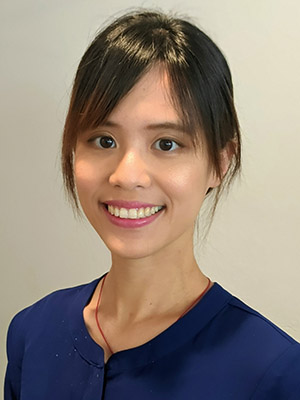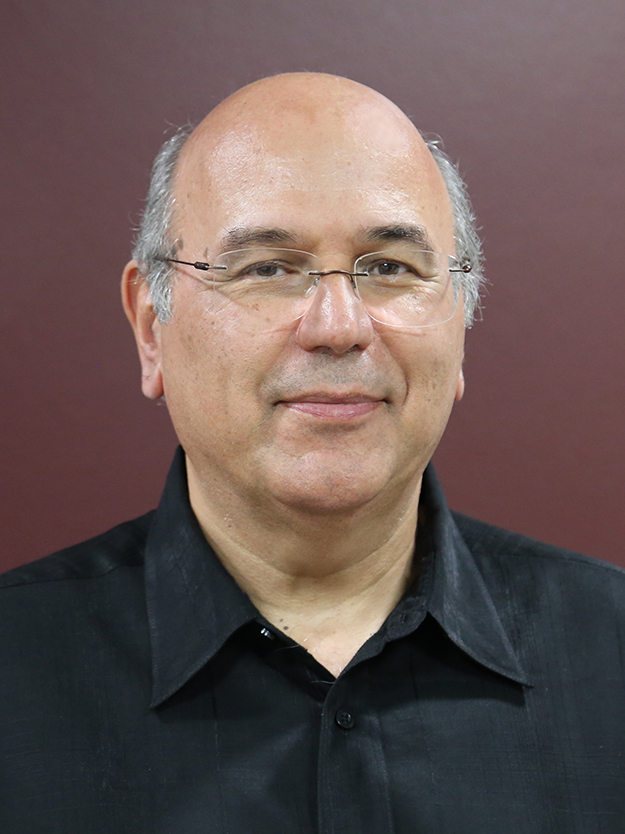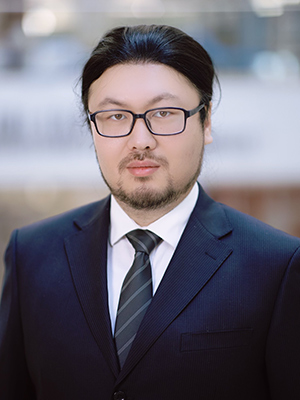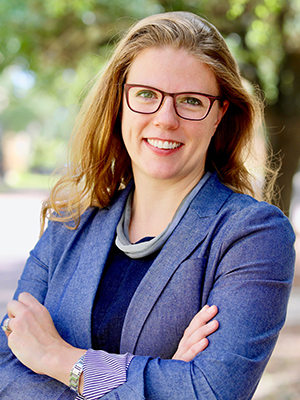Take chances, experiment, and discover something new.
The Department of Materials Science and Engineering (MSEN) uses a Research Experience for Undergraduates (REU) grant from the National Science Foundation (NSF) to offer undergraduate engineering and science students the opportunity to engage in materials science research early in their undergraduate careers.
The Multifunctional Materials Program allows up to 10 undergraduate students to gain experience in multiscale experiments and modeling of multifunctional material systems each summer.
Program dates usually run from the fourth week of May to the beginning of August.
Eligibility
This competitive undergraduate program is open to undergraduate students who:
- Are U.S. Residents and permanent residents only
- Are enrolled in 4-year U.S. universities
- Have completed their second and third year with a 3.0 GPA or better
- Have completed an introductory materials course in their institution
Application
The following documents are required for your application to be reviewed:
- A completed online application
- upload your statement of purpose and unofficial transcript with Fall grades in the application)
- State project/s and professor/s of interest in your statement of purpose.
- Two online recommendation forms.
- Share this link with your references who are recommending you; they must fill out the form.
Application reviews begin on March 1 and decision notifications are on a rolling basis.
Have questions? Contact msen-reu@tamu.edu. Or bilal.mansoor@tamu.edu
Program Benefits
-
During the 10-week program, students gain hands-on experience in various materials synthesis and characterization techniques, different types of multifunctional materials, and materials modeling methods such as molecular dynamics to continuum scale constitutive modeling, optimization, advanced finite element-based micro-mechanics, and macroscopic finite element modeling.
They learn how research is conducted, develop experimentation and modeling skills, and learn how to conduct property characterization, analysis, testing and optimization of multifunctional materials and components.
MSEN faculty and a trained graduate student monitor all progress.
At the end of the program, students present their research results in a poster symposium and participate in an REU Students Invent Experience in collaboration with the Aggies Invent Program.
Students receive:
- A stipend
- On-campus housing and travel support
- An industrial visit opportunity
- Professional development seminars
- Poster session experience with over 150 students from different REU programs
Program Projects
-
Mentor: Dr. Ibrahim Karaman
Background:
Additive manufacturing (AM), or 3D printing, has achieved significant advancements since its inception in the 1980s, leading to a revolution in manufacturing parts in traditional 3D space. Now it is witnessing further evolution through the introduction of 4D printing. The fourth "D" refers to the dimension of time, where the 3D printed part undergoes a controlled change in shape or properties in response to an external stimulus over time, such as heat, stress, light, and moisture. This approach is often used in polymers, while 4-D printing of metallic materials lags behind. A few recent works, mainly from the Pl's group, have begun to explore 4-D printing of active metallic systems, particularly shape memory alloys (SMAs). In this project, we take advantage of the fact that the physical and functional responses of SMAs depend significantly on the processing schemes employed during AM (such as selection of energy source power and scan speed, layer density, and scan line spacing). By controlling the processing parameters, AM-fabricated SMAs can be tailored to achieve spatial and time dependent functional responses by controlling the local composition and microstructure.Research Plan:
REU students will participate in the various stages of the research, including systematic studies of the effects of laser power, scan speed, and scan line spacing on the local composition and microstructure of various nickel-titanium SMAs and new NiCoMnln magnetic SMAs using two different AM techniques: laser powder bed fusion and direct laser energy deposition. REU students will also be involved in conducting parametric post-AM heat treatment studies, determining magnetic and mechanical properties using various characterization instruments, determining local compositions using simple spectroscopy techniques, and identifying microstructures using optical and electron microscopy with the help of graduate students. Students will have the opportunity to conduct magneto-thermo-mechanical characterization of samples that other REU students fabricate to analyze the effect of AM parameters on the physical and mechanical properties under multiple fields (mechanical load, magnetic field, and temperature) using the state-of-the-art experimental systems available at Texas A&M University.
-
Mentor: Dr. Raymundo Arroyave
Background:
Most significant advances in energy technologies were enabled by the discovery of new materials, which have increased the overall efficiency of energy usage (e.g., new high-temperature alloys 39, 40), expanded the renewable energy inventory (e.g., more efficient photovoltaic materials), facilitated the storage of energy (e.g., battery materials41, 42), and allowed the recovery of energy that otherwise would be wasted (e.g., thermoelectric materials43, 44). Novel multi-functional materials enable the conversion of various energy forms (magnetic, mechanical, thermal, and electrical) through couplings between different kinds of energy forms and have the potential to significantly outperform conventional conversion technologies and facilitate technological breakthroughs that will contribute to our energy independence. However, the space for multi-functional materials is highly complex, and the discovery of novel materials needs to be accelerated to facilitate the development of transformative technologies. Fortunately, recent advances in materials genomics45, Artificial Intelligence46, 47 (AI) and data science48, 49 make possible the discovery of relationships between materials features and materials performance through data-enabled approaches that can be leveraged to accelerate the discovery of materials with optimal functionality. In this REU, the student will learn and acquire the fundamental skills necessary to carry out AI-enabled materials discovery and will apply such skills to the investigation of novel functional materials.Research Plan:
REU students will be involved in the development of machine learning (ML) approaches to build predictive models connecting materials, features, and performance. They will be trained in the basic aspects of the physics of multi-functional materials (weeks 1 and 2). They will also be trained in data visualization, data analysis and ML workflows through the Orange platform50 (weeks 2 and 3). Students will be capturing data sets of the relevant materials to be investigated and mentored by the graduate student in the curation of materials data, which will be stored in the Materials Data Curation System51 (weeks 4,5). At the same time, they will be trained in the use of scripting programming languages (such as Python52) to automate many of the pre- and post-processing of files necessary to run calculations. Using Orange, the REU students will explore the use of different supervised and unsupervised ML models and evaluate the models through rigorous informatics evaluation techniques (weeks 6-10). The students will gain a deep understanding of material science and proficiency in data analysis, ML, and Python programming, backed by consistent mentorship and valuable networking opportunities.
-
Mentor: Dr. Yuxuan Cosmi Lin
Background:
Research Plan:
Next-generation computing and artificial intelligence technologies call for the out-of-the-box design of semiconductor materials and device architectures with non-traditional device characteristics that can bring computing and signal processing to the analog domain closer to the sensor level. Such a new computing scheme, called near-sensor or in-sensor computing, is fundamentally advantageous over the traditional hierarchical von Neumann computing architecture in terms of novel functionality, energy efficiency and scalability. Two-dimensional (2D) functional materials have emerged recently, offering novel multi-functionalities in different physical domains. Samples include semi-metallic graphene, insulating, hBN, semiconducting MoS2, and WSe2, as well as ferroelectric CuInP2S6. Because of their atomically thin nature, it is possible to engineer 2D material heterostructures with an extra degree of freedom and exceptional controllability at the atomic scale limit for the functionalities required in the application of in-sensor computing. In particular, Lin has proposed and implemented two kinds of 2D material heterostructures with tunable optoelectronic properties for spectral and imaging sensing and processing: (1) 2D semiconductors with wide-range bandgap tuning induced by electrochemical gating; (2) graphene/hBN/graphene heterostructures with electrically tunable photo-assisted tunneling. Based on the proposed structures, the spectral photocurrent response can be widely tuned simply by electrical signals, and signal processing functionalities both in the 2D imaging domain and in the spectral domain can be programmed directly onto these tunable photodetectors (Figure).
This project will focus on the design of vertical heterostructures based on functional 2D materials for advanced optoelectronic functionalities that can enable in-sensor computing technologies. The students will work on the theoretical design and experimental verification of the in-sensor computing devices. Students will be exposed to both fundamental knowledge and cutting-edge research activities in emerging semiconductor technologies. The proposed in-sensor computing scheme will transform the future computing and intelligent sensing systems into very different form factors and enable more powerful hardware of artificial intelligence with energy consumption orders of magnitude smaller than the existing computing architecture. The expected tasks for the REU students will be: (1) Design the 2D semiconductor heterostructures with desired optoelectronic functionalities. (2) Use a computer-aided design tool to simulate the proposed device characteristics. (3) Based on the simulated device characteristics, design the image and spectral processing algorithms that can harness the unique performance of the 2D semiconductor heterostructures. (4) Verify the design and theoretical findings experimentally.
-
Mentor: Dr. Patrick Shamberger
Background:
Thermal energy storage (TES) materials offer a compact solution to absorb heat during periods of high heat generation, increasing efficiency and minimizing temperature rise of transient pulsed power systems. However, these systems are limited by their inflexibility, in that they only absorb heat over a narrow temperature range. Tunable TES materials introduce an additional vector (e.g., pressure) to control the temperature at which thermal energy is stored.Research Plan:
The overarching objective of this project is to develop reversible endothermic condensed phase transitions (solid/solid or solid/liquid) that have dynamically tunable critical transition temperatures as the basis for responsive and tunable thermal energy storage media. This task will focus primarily on understanding intrinsic chemical degrees of control on the kinetics of the reversible phase transformation and the dynamic tuning of the material. We will focus on plastic crystals that are known to have relatively large DH and dTcr/dP as model systems and will focus on the effect of 1) molecular structure, 2) crystal structures of parent and daughter phases, 3) molecule size, shape, and symmetry, and 4) intramolecular bonding. The anticipated outcome of these tasks is an approach to design tunable thermal energy storage materials at the molecular level, as well as a validation of their utility as energy storage media. These materials have the potential to improve the efficiency of a variety of transient systems, from electric cars and airplanes to HVAC and building climate control systems. Students will measure the phase transformation kinetics of different plastic crystal molecules using calorimetry, polarized optical light microscopy, and custom thermal cycling apparatuses. These data will be fit to kinetic models, which will be interpreted using crystallographic information (specifically, the transformation strain between the parent and daughter phase) and molecular structural information. This information will be correlated with kinetic parameters and used to develop techniques to increase the reversibility of the plastic crystal transformations.
-
Mentors: Dr. D.C. Lagoudas, Dr. J. Lutkenhaus, T. Zhou
Background:
Structural energy and power systems offer mechanical and electrochemical performance in a single multifunctional platform. Potentially, they reduce mass and/or volume for aircraft, satellites, and ground transportation. However, a natural tradeoff between mechanical and energy storage properties makes it difficult to synergistically optimize both. Common approaches center on modifying battery electrodes or electrolytes with stiff fillers such as carbon or glass fibers. This type of reinforcement leads to lower energy and power density. Here, we explore a different battery mechanism with redox-active polymers in a dual-ion battery to increase the electrochemical performance of carbon fiber-based batteries. A polymer-based dual-ion battery shortens the diffusion path, which leads to a higher power density. Our earlier work has shown excellent results for power density increase53. This faster energy transport is crucial for space applications with low temperatures and slow diffusion. Degradation due to electrochemical degradation, internal stress development, and external mechanical loading remains unexplored.Research Plan:
The students’ summer activities will center on electrode fabrication, pouch cell assembly, and mechanical and electrochemical characterization. The mentoring team will consist of a graduate student, a post-doc, and the PIs. At the beginning of the summer, students will synthesize carbon fiber-reinforced polymer-based batteries. Each of these fabrications is performed in the Lutkenhaus lab on a regular basis. In early to mid-summer, students will perform separate electrochemical (capacity, energy, power) and mechanical (three-point bending) characterization on these materials (fi. They will then perform in-situ energy density and power density characterization at different deflections. In mid- to late-summer, students will develop a micromechanics model to capture the experimental observation and explain the mechanism of the electro-chemo-mechanical coupling on structural battery degradation. The students will develop a test matrix to answer the following questions: How do mechanical deformation and degradation change electrochemical performances? How do these behaviors change at lower temperatures? How can we predict and improve the lifetime of a structural battery for low-temperature applications?
-
Mentor: Dr. Kaiwen Hsiao
Background:
There is a critical need to develop sustainable separation methods to meet the global stress on freshwater supplies. Membrane-based water purification methods are desirable separation technologies due to their higher energy efficiency than thermal approaches. However, current membrane fabrication methods are primarily based on empirical processes such as phase-inversion technologies that inevitably introduce pore size polydispersity and suboptimal performances, such as selectivity-permeability trade-offs, high fouling potential, and poor mechanical properties. Therefore, developing a scalable and novel membrane fabrication method is desirable for forming multiscale pore sizes ranging from micrometer to nanometer length scales with high uniformity and free-form membrane surface pattern designs to minimize biofouling.Research Plan:
The students’ summer research will center on polymer materials preparations, high-resolution and high-speed additive manufacturing of these membranes, study the material morphology and mechanical properties, and visualize molecular transport of fluorescence biomolecules through the membrane. The mentoring team will consist of a graduate student and Hsiao. The students will learn how to prepare polymer electrolytes, learn how to vary the photopolymerization processes to control the nanostructure formation and explore visualization of labeled biomolecules transporting through nano- and micron-scale pores. Key research questions the students will probe include: 1) How do photopolymerization kinetics affect the assembly and formation of nano-transport pathways? 2) How are the mechanical properties related to membranes with different nanoscale morphology? 3) How do the size and distribution of the pores affect the transport of biomolecules?
-
Mentor: Dr. Emily Pentzer
Background:
The Pentzer lab develops new particle surfactants to stabilize various liquid-liquid interfaces, driving the ability to stabilize, e.g., water-in-oil, oil-in-water, oil-in-oil, ionic liquid-in-oil, and salt hydrate-in-oil emulsions57. These phase-separated systems are then used to make composite materials with multi-functional properties. To date, applications have included carbon capture58, 59, electrochemical energy storage60, thermal energy management61, 62, and imaging. The development of new particle surfactants gives access to different compositions. Still, it has thus far relied on a guess-and-check approach. The proposed research aims to overcome this current limitation by establishing relationships between particle wettability, liquid-liquid interfacial tension, physicochemical properties of the liquids, and energy input on the formation and stability of the emulsions. Students in this research project will gain skills in colloidal synthesis, interfacial characterization, emulsification, and collecting, organizing, and disseminating data and research results. Emulsions are a critical component of multiple facets of modern life- from food to cosmetics to drilling oil. They are used to template the formation of composite and multi-functional materials. Yet they can only be used as such if they can be readily accessed and are stable. This work will address the fundamental question of what factors dictate emulsion formation and stability.Research Plan:
The REU student in the Pentzer lab will first functionalize silica particles by salinization following a well-established procedure. Different pendant functional groups will be appended to the same sided silica particles, and the composition of the particles will be characterized, as well as wettability and what solvents the modified particles are dispersible in. Then, the student will identify potential emulsion systems of interest, with the solvents the modified particles are dispersible in dictating the expected continuous phase of an emulsion that could be formed. The wettability of the particles will be established by the water contact angle, and then the interfacial tension of two liquids will be measured by pendant drop tensiometry, both in the presence and absence of the particles. Finally, the student will prepare a matrix of emulsion systems and monitor formation and stability using optical microscopy techniques. The student will then identify any relationship between the physical properties of the system and its components and the ability to form stable emulsions. Tasks for the REU student are: (1) Modifying silica particles for varied wettability, (2) Measuring physical properties of particles and liquid-liquid combinations. (3) Creating an emulsion matrix to determine conditions for stability.
-
Mentor: Dr. Svetlana Sukhishvili
Background:
Research Plan:
This project will focus on achieving multiple and controlled shape reconfiguration in dynamic covalent polymer networks based on furan-maleimide Diels-Alder (DA) reactions. DA polymer (DAP) networks are re-processable due to the presence of dynamic, temperature-activated bonds and have the potential to replace traditional thermosets. DAP-based materials have widely tunable mechanical properties (Young’s modulus E from several MPa to several GPa) and exhibit a novel route of materials’ shape morphing above the materials’ glass transition temperature via the mechanism of network plasticity with no creep, all in the solid state (see the figure)54-56. The propensity of DAP materials to solid-state reconfiguration is strongly determined by the conversion degree and stereochemistry of DA bonds formed during network synthesis. So it is essential to establish the impact of polymer chain rigidity and network processing conditions (temperature, time, solvent-free vs. solution processing) on the DA bond formation and material reconfigurability that are essential for future applications of these materials as shape-adaptable, re-processable materials for consumer market and defense sectors, including soft robotics.
The REU students will work with a graduate student to develop, construct, and characterize novel DAP networks constructed using epoxy monomers that were previously studied in our group, as well as other monomers yielding polymers with different chain rigidity. By strategically varying the network processing temperature, time, and solvent conditions, the REU student will (a) construct several networks using modifications of the synthesis technique available in the Sukhishvili lab (Task 1); (b) study degree of DA conversion using FTIR and 1H NMR techniques (Task 2); (c) correlate the data with the fraction of endo DA attachments (determined by differential scanning calorimetry) and material’s shape (Task 3).
-
Mentor: Dr. Miladin Radovic
Background:
MXenes are a versatile class of multifunctional two-dimensional (2D) ceramic nanosheets with diverse compositions and tailorability for different applications, including energy storage, catalysis, electromagnetic interference shielding, sensors, composites, and batteries 66, 73. However, due to synthesis difficulties and MXene's chemical instability, large-scale production faces challenges. Recently, we have demonstrated that challenges in achieving a scalable synthesis of high-quality MXenes stem from the intricate process of selectively etching the A layer and the subsequent overlapping of MX layers.Research Plan:
Our core-shell model highlights the critical role of specific etching parameters, including the choice of etchants, their concentrations, etching temperature, particle sizes of the parent MAX phase, and the number of etchants applied 74. These factors significantly influence the rates of A-layer etching and over-etching of MX layers, ultimately impacting the yield of MXenes. Furthermore, our recent findings have introduced safer alternatives to traditional etchants, such as (i) a mixture of organic quaternary fluoride salts with milder acids 74 and (ii) molten fluoride salts 75, 76. These discoveries open up new possibilities for the scalable production of high-quality multifunctional MXenes using safer etching methods. The UG student will work closely with graduate students and our industrial partner engaged on the recently awarded NSF grant #2240554 entitled “GOALI: Manufacturing of Two-Dimensional MXene Nanosheets by Salt Solution Etching and Their Solution-based Layer-by-Layer Assembly into Heterostructures.” REU students’ major research tasks will include conducting XPS analysis of MXenes prepared using different etching conditions and correlating distribution on terminal groups (such as –O, -OH, -F, -Cl) to the etching conditions; conducting AFM, DLS and XRD measurements on MXenes prepared using different etching conditions to establish relationship between size, thickens and interlaminar spacing of MXenes and etching conditions; carrying out SEM and EDS to characterize morphology and composition of different MXenes.
-
Mentor: Dr. Qing Tu
Background:
2D Hybrid Organic-Inorganic Perovskites (HOIPs) are burgeoning low-cost, high-performance semiconductor materials with great potential in a wide range of energy and electronic applications. These materials manifest unique mechanical and electrical behaviors different from their 3D counterparts and 2D inorganic semiconductors. It is crucial to understand their failure behavior under mechanical and electrical stresses, which are ubiquitously found in device applications. Furthermore, 2D HOIPs offer tremendous chemical space to engineer their functional properties. Establishing a structure-property relationship regarding their failure behavior is vital to guide the materials design of 2D HOIPs toward reliable and durable device applications.Research Plan:
The students will work with the graduate student mentors and Dr. Tu to investigate the fracture/fatigue and dielectric breakdown behaviors of prototypical 2D HOIP single crystals and their dependence on key structural parameters. The students are expected to 1) synthesize 2D HOIP single crystals using solution-based methods; 2) prepare and identify molecularly-thin 2D HOIP sheets by mechanical exfoliation; 3) Analyze the mechanical and electrical spectroscopy data from atomic force microscopy; 4) Perform Monte Carlo and Finite Difference simulations to understand the experimental observed failure behaviors.
Principal Investigators
Ibrahim Karaman
- Department Head, Materials Science & Engineering
- Professor, Materials Science & Engineering
- Regents Professor
- Chevron Professor I
- Office: RDMC 245
- Phone: 979-862-3923
- Email: ikaraman@tamu.edu

Bilal Mansoor
- Associate Professor, Materials Science & Engineering
- Office: RDMC 201B
- Phone: 979-458-6887
- Email: bilal.mansoor@tamu.edu

Investigators
Raymundo Arróyave
- Associate Department Head for Research, Materials Science & Engineering
- Professor, Materials Science & Engineering
- Chevron Professor II
- Presidential Impact Fellow
- Chancellor EDGES Fellow
- Engineering Dean’s Research Fellow
- Affiliated Faculty, Industrial & Systems Engineering and Mechanical Engineering
- Office: RDMC 226
- Phone: 979-845-5416
- Email: rarroyave@tamu.edu

Kaiwen Hsiao
- Assistant Professor, Materials Science and Engineering
- Office: RDMC 201A
- Phone: 979-458-8645
- Email: kwhsiao@tamu.edu

Dimitris Lagoudas
- Interim Department Head, Aerospace Engineering
- Professor, Materials Science & Engineering
- Robert C. “Bud” Hagner Chair of Engineering
- University Distinguished Professor
- Regents Fellow
- Office: HRBB 517, RDMC 300F
- Phone: 979-458-1378
- Email: lagoudas@tamu.edu

Yuxuan "Cosmi" Lin
- Assistant Professor, Materials Science and Engineering
- Affiliated Faculty, Electrical & Computer Engineering
- Office: RDMC 214
- Phone: 979-458-6889
- Email: yxclin@tamu.edu

Emily Pentzer
- Affiliated Faculty, Chemical Engineering and Materials Science & Engineering
- Associate Dean for Research, College of Arts & Sciences
- Professor, Department of Chemistry
- Presidential Impact Fellow, Texas A&M University
- Phone: 979-458-1048
- Email: emilypentzer@tamu.edu

Miladin Radovic
- Associate Department Head
- Professor, Materials Science & Engineering
- Director, Materials Characterization Facility
- Office: RDMC 302F
- Phone: 979-845-5114
- Email: mradovic@tamu.edu

Patrick Shamberger
- Director of Undergraduate Programs, Materials Science & Engineering
- Associate Professor, Materials Science & Engineering
- AZZ Inc. Fellow
- Office: RDMC 227
- Phone: 979-458-1086
- Email: patrick.shamberger@tamu.edu

Svetlana A. Sukhishvili
- Professor, Materials Science & Engineering
- Director, Soft Matter Facility
- Office: RDMC 219
- Phone: 979-458-9840
- Email: svetlana@tamu.edu
